Things You Didnt Know Where Japanese
Unusual facts about Japan

Unusual facts about Nihon
Image adjusted from: The Dallas Morning News , @therelocos
The Land of the Rising Sun is an interesting place, to say the to the lowest degree. Japan has influenced the globe in numerous means – innovations that have inverse our daily lives, food that has shaped international palates, and subcultures that continue to influence popular civilization.
Japan continues to evolve speedily – just when you think you understand everything about Japanese civilization, something new pops upwards. We've made a list of xx unusual facts about Japan to bear witness that this mighty nation will surprise you at every turn.
1. Late-dark dancing was illegal until 2015
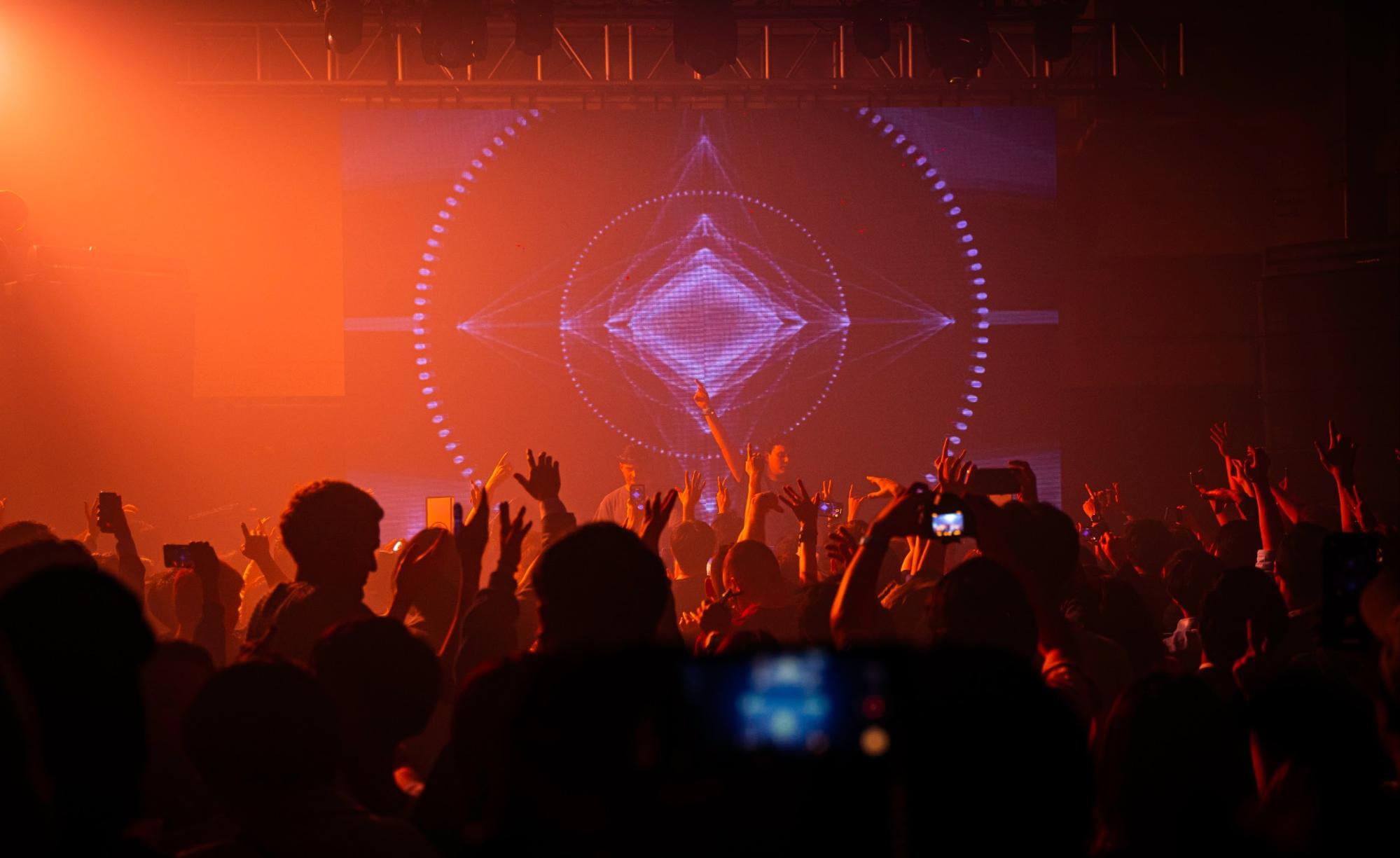
Image credit: Heshan Perera
Imposed later World War 2, the ban was meant to crevice downwards on prostitution as the trip the light fantastic toe halls were a hotbed for vices. Dancing in venues without a dance licence after midnight was illegal, and you lot could be arrested.
However, it was not regularly enforced in the late 20th century. The ban saw a revival in the 21st century when a spike in celebrity-related drug busts led to the police reinforcing the police and requiring clubs to close at midnight.
The primitive law was replaced past new legislation that allowed clubs equipped with lighting brighter than x lux – well-nigh as bright as twilight – to apply for a new licence to operate 24 hours.
2. About all smartphones sold are waterproof because people utilise them fifty-fifty in the bathroom

Image credit: Roberto Nickson
H2o-resistant phones take been the norm for over a decade in Japan. Approximately ninety% to 95% of the phones sold are waterproof.
Some attribute this to the bathing culture in Japan. Many people soak in bathtubs to unwind afterward work, and users find the waterproof function useful just in instance their phones slip into the water.
iii. The globe's oldest visitor was from Nihon
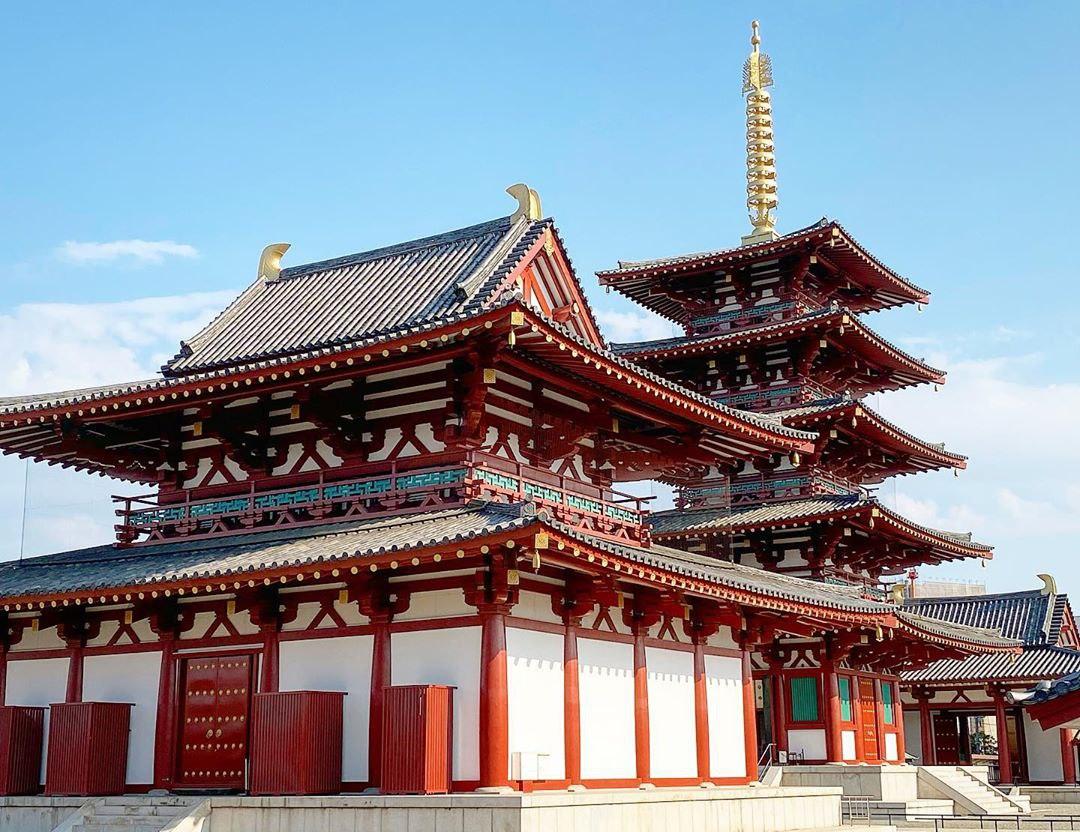
Shitenno-ji Temple
Prototype credit: @junichi_kobe
Kongō Gumi was a construction visitor based in Japan and the longest-operating company in history. Information technology operated for over ane,400 years, between 578 AD to 2006.
The construction company was founded by an immigrant from Baekje, which is part of modern-24-hour interval Korea . He was deputed by Prince Shotoku to build the Shitenno-ji, a Buddhist temple in Osaka that still stands today. The company was too involved in the construction of many historic buildings, such as the Osaka Castle in the 16th century.
Kongō Gumi was passed down the family unit for 50 generations until it vicious into financial troubles in 2006. The company was liquidated and absorbed every bit a subsidiary to the Takamatsu Construction Group, and information technology continues to specialise in building Buddhist temples.
Interestingly, the five oldest companies still operating today are Japanese, 3 of which are in the hospitality industry.
4. Nippon consists of 6852 islands
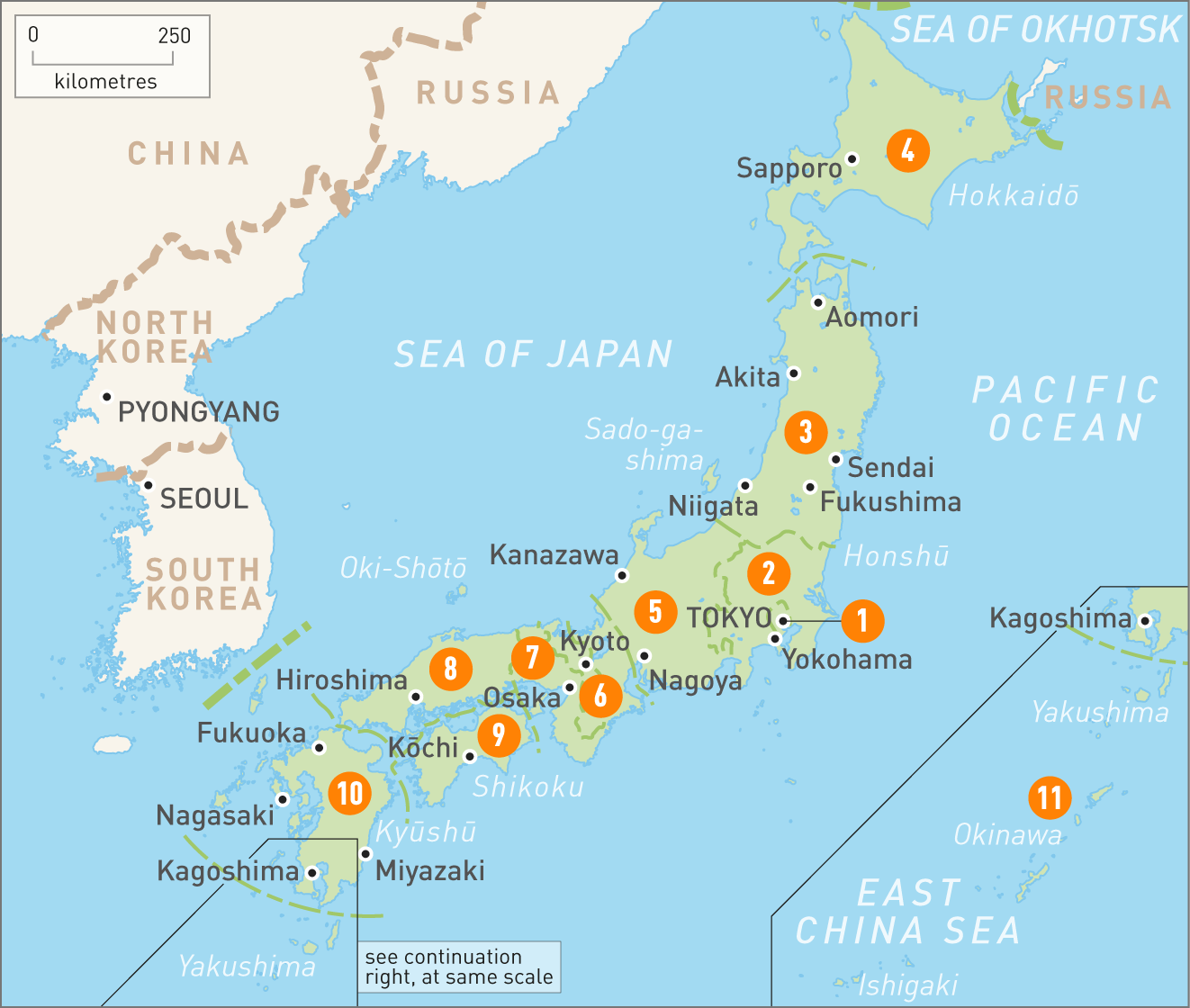
Epitome credit: Rough Guides
While it is widely known that Japan has many different prefectures with different climates, not many know that Nihon is actually an island nation. It is, in fact, the largest E Asian island country, and the 4th largest isle nation in the earth.
The four biggest islands in Japan are Honshu, Hokkaido, Kyushu, Shikoku, and Osaka, which makes upwardly about 97% of the total land expanse birthday . The largest isle is Honshu, which is considered mainland Nihon
5. Nihon has a festival dedicated to the phallus
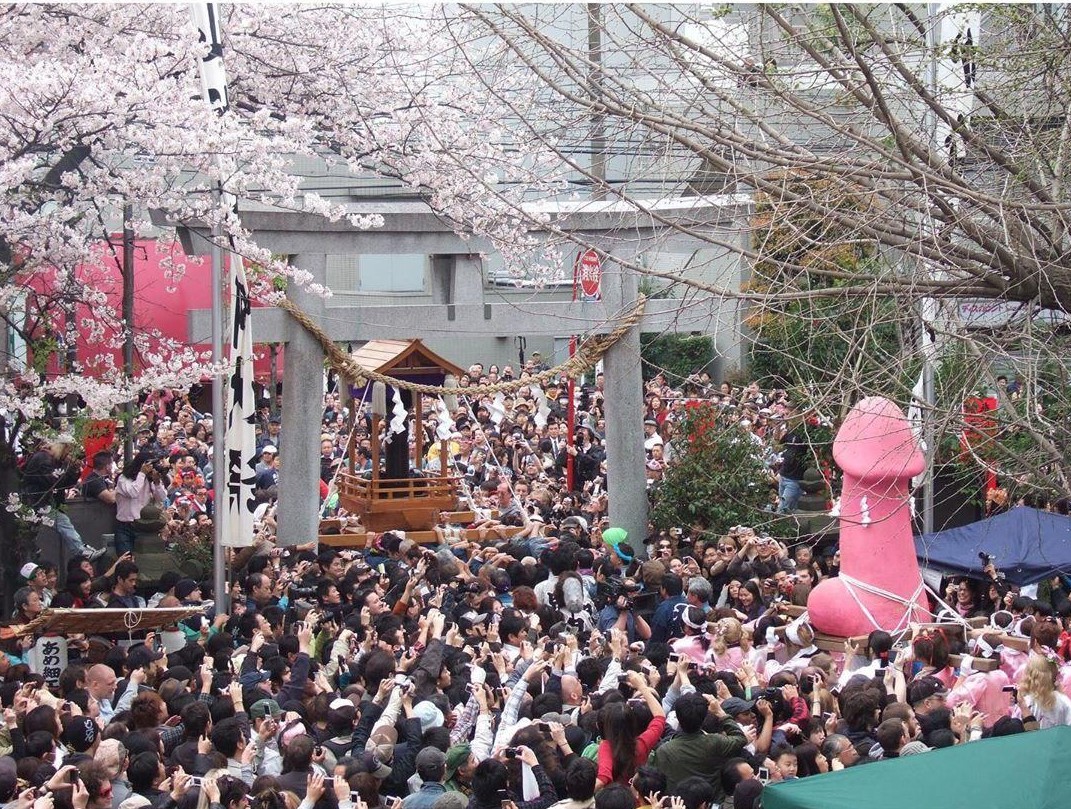
Epitome adapted from: @kawasaki_city
This Shinto festival is known as Kanamara Matsuri (かなまら祭り), which literally translates to the Festival of the Steel Phallus . The festival is historic in the city of Kawasaki on the first Sunday in April.
The phallus is the star of the festival, and everything is phallic-shaped in its honour. This includes processed, carved vegetables, and decorations. The highlight is the mikoshi parade, which sees large decorated phalluses paraded in a bladder shaped similar a shrine.
The origin of the festival comes from an erstwhile Shinto fable. Fable has it that a demon in one case hid in the individual parts of a goddess and bit off two of her suitors' penises on their wedding ceremony night. A blacksmith then created an fe phallus, which broke the demon's teeth and acquired it to abscond.
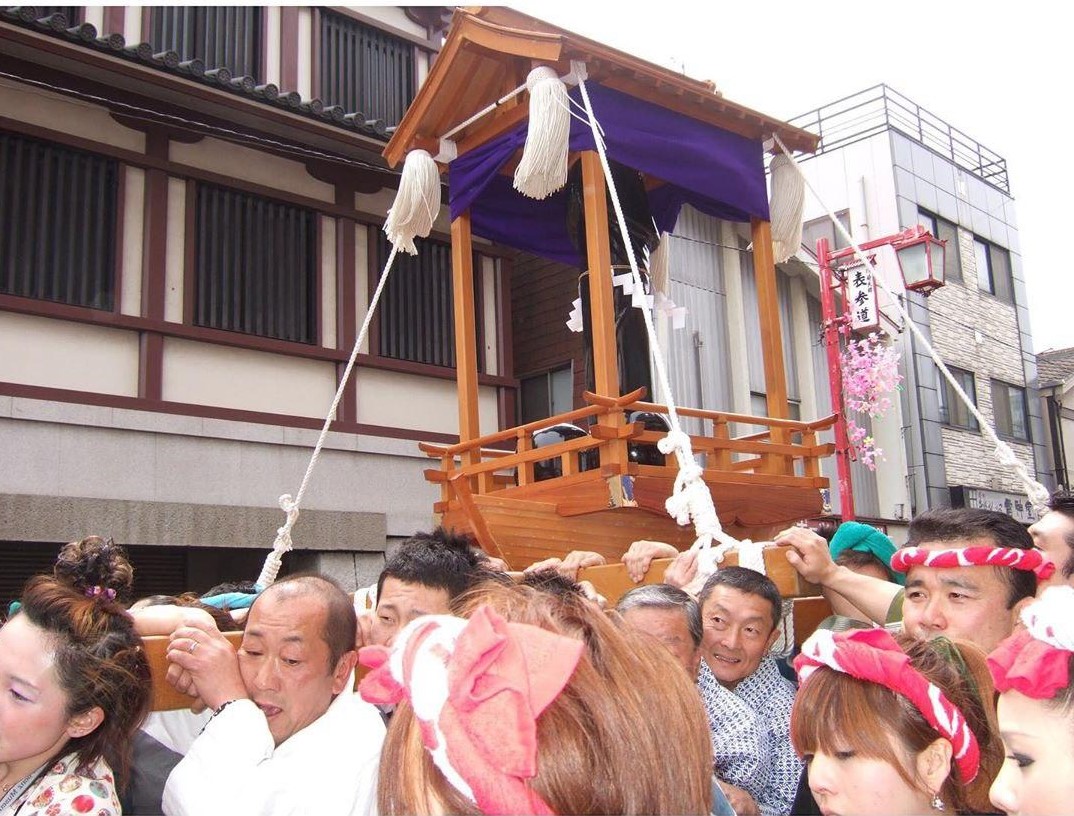
Image credit: @kawasaki_city
The shrine is a oasis for prostitutes and people suffering from sexually-transmitted diseases to seek prayer and protection. People also pray for fertility, marriage, and businesses.
Today, the festival is an LGBTQ-friendly event as it as well promotes inclusiveness. The money raised from the festival is then donated to HIV research.
6. Taking a power nap at work is socially acceptable
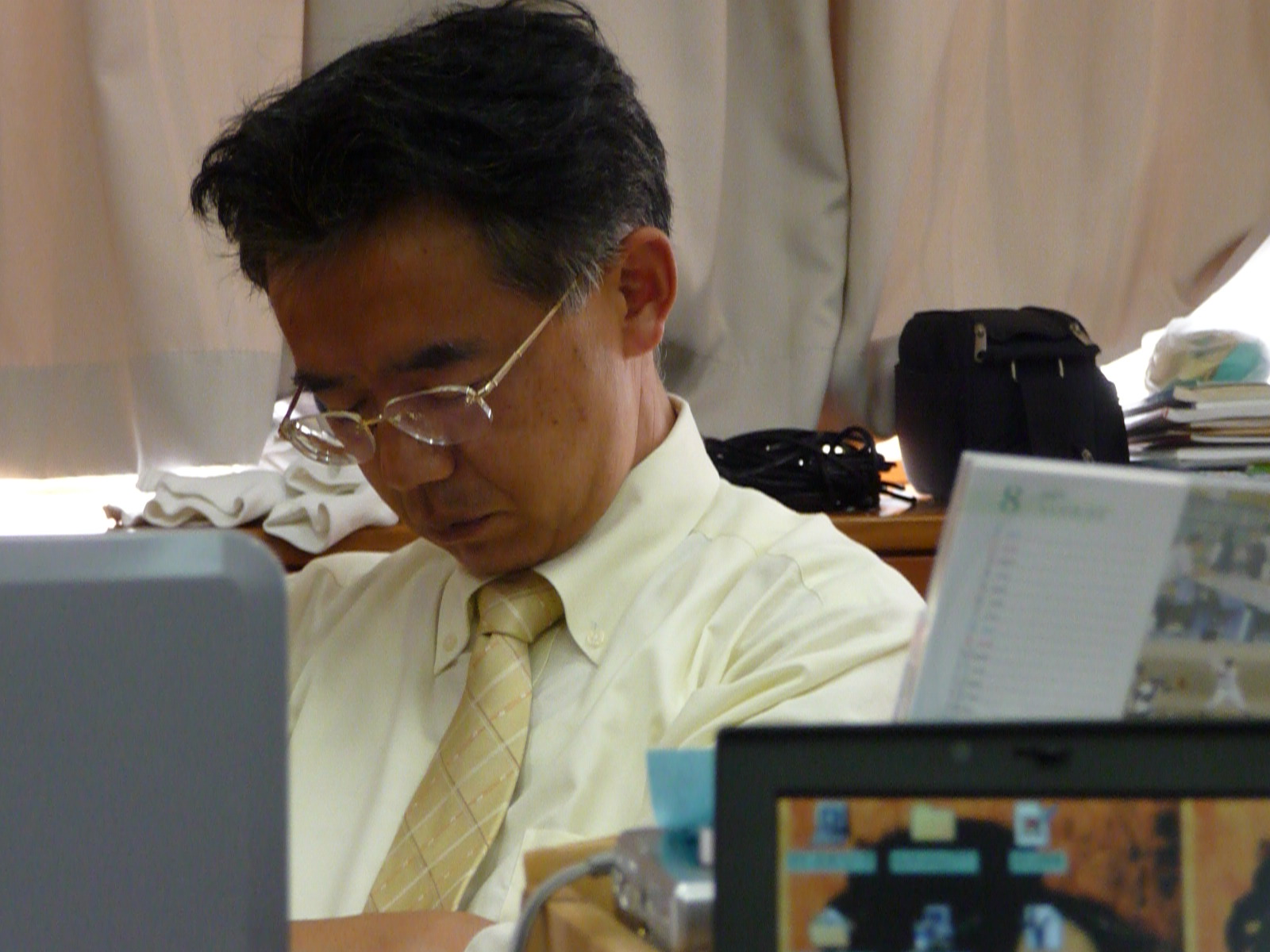
Paradigm credit: Mackensie Leigh
The Japanese piece of work longer hours than any other country in the world, and slumber the least hours on a weeknight. Information technology's clear that the overworked Japanese desperately need their rest.
Thankfully, Japanese employers allow their employees to take power naps at work. The term inemuri (居眠り) refers to this civilisation – it translates to sleeping while being present. Catching a quick snooze is considered every bit a sign of working hard and existence busy, rather than slacking off.
There is also a strong culture of napping publicly in Japan and you'll find people catching some shut-eye in places non associated with sleeping. This phenomena too attests to the level of public prophylactic in Japan.
7. Slurping noodles is considered polite

Image adapted from: The Dallas Morning News
In a country known for its strict customs and manners, one particular dining rule continues to baffle visitors. Reverse to conventional table manners, loudly slurping noodles is considered good manners . The act of slurping when you're eating noodles shows that you're enjoying your meal and paying compliments to the chef.
Slurping likewise has a scientific purpose – it enhances the flavour of noodles, especially soba . Soba (buckwheat noodles) doesn't have a strong taste on its own. Slurping helps to increase the retronasal smell and allows yous to improve perceive flavour dimensions.
8. The literacy rate in Japan is 99%

Image credit: @nirro04
Literacy amidst youths anile in a higher place 15 hovers around 99%, which is one of the highest in the world. The literacy test evaluates the examination-taker'southward ability to read and write simple sentences and solve bones arithmetic equations.
nine. Japan is the 2d-largest consumer of seafood

Image credit: Michael Wu
Japan has a seafood consumption footprint of 7.4 million tonnes – approximately the weight of 37,000 bluish whales. In comparison, the U.s.a. – with a population 2.5 times larger than Nippon – has a seafood consumption footprint of seven.ane million tonnes.
Fish and seafood consumption per capita in 2017 was 45.49kg. But in the chimera economy years from the mid-80s to 2000, per capita consumption was even higher, averaging 70kg per person. That's similar eating sushi for iii meals a day, 206 days a year.
10. Tokyo is the most populous metropolitan area in the world

Image credit: @c.j131
Greater Tokyo is the most populated metropolitan area in the world, with 38 million people residing in Tokyo and the 3 neighbouring prefectures – that's 30% of Japan's total population.
Greater Tokyo covers approximately 13,500km 2 , and it includes Tokyo Metropolis and the surrounding prefectures, such as Kanagawa, Chiba, and Saitama. In comparison, New York City covers 784 km 2 , approximately half the surface area of Greater Tokyo.
xi. Adult diapers sell more than babies diapers
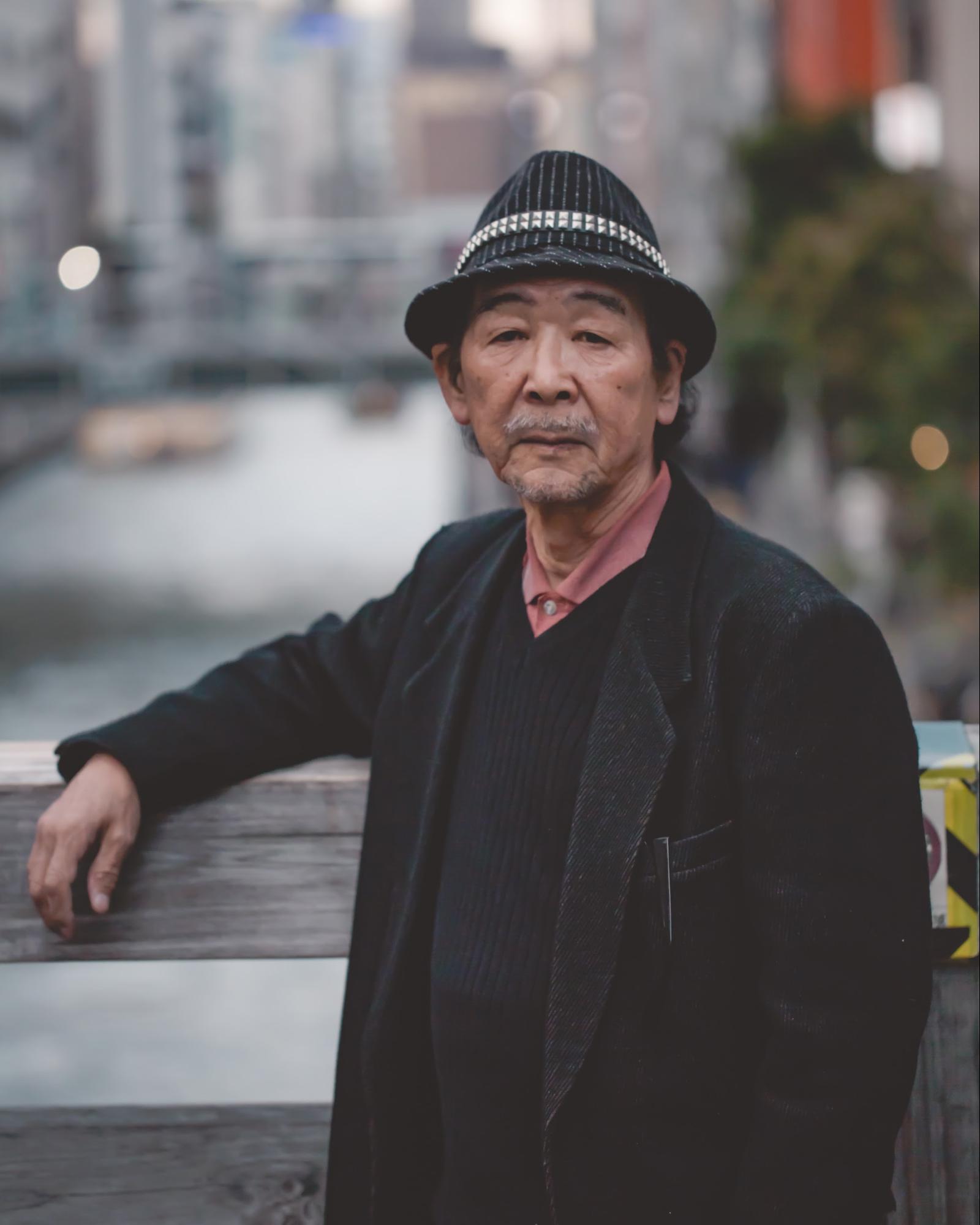
Image credit: Ash Edmonds
More a quarter of Japan's population is over 65, and nascence rates are at a record low. Co-ordinate to the Pew Research Centre, in that location are more diapers produced for adults than for babies, and Nihon's ageing population is likely the cause.
This change in consumer demographics is also resulting in a shift in most industries, which includes nutrient, retailing, and hygiene.
12. A Pokémon episode once caused epileptic seizures in kids
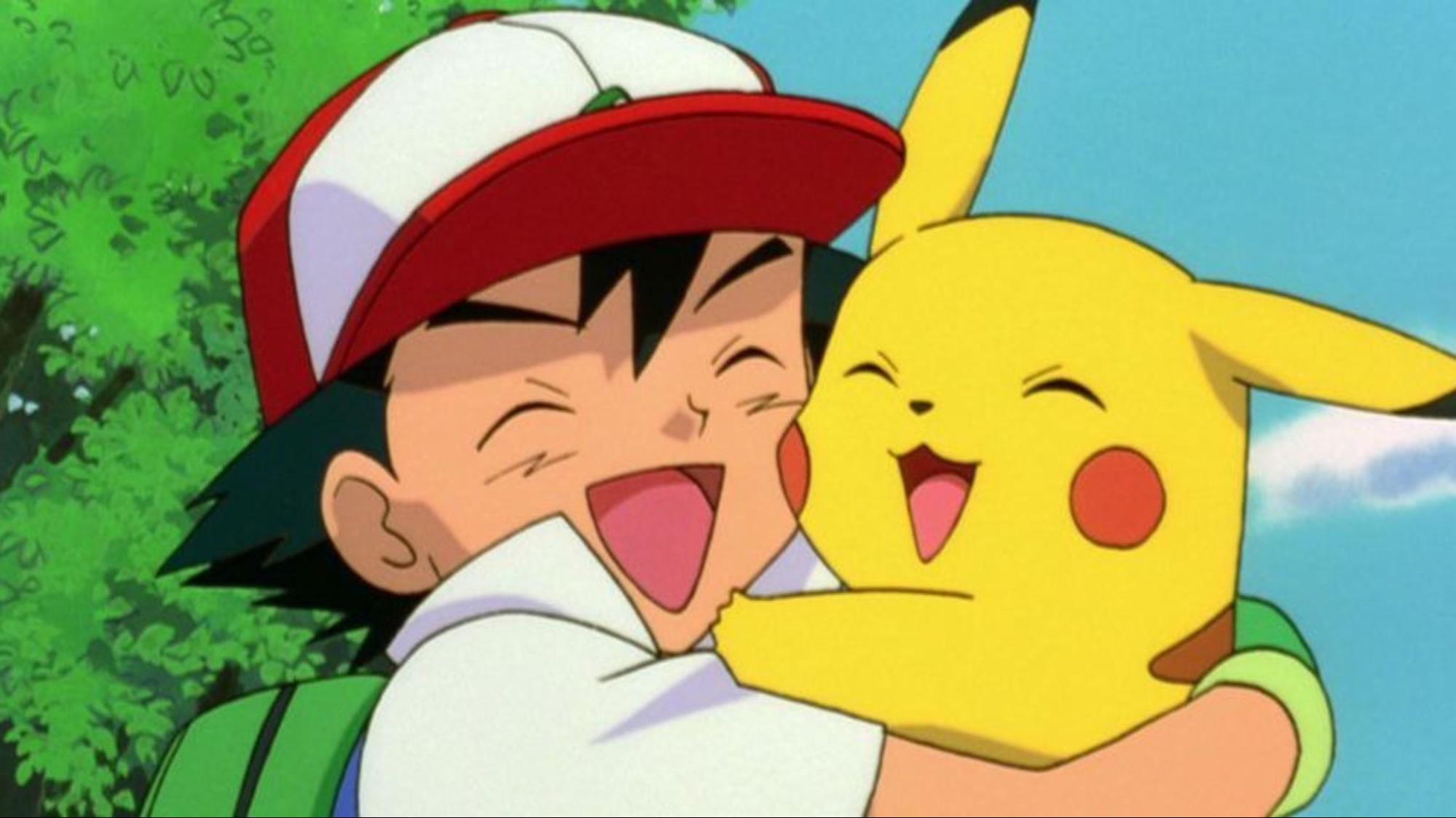
Image credit: Syfy
Pokémon is a well-loved anime series and the adorable pocket monsters are household names worldwide. However, the serial hides a dark incident in its past. In 1997, 685 children were rushed to hospitals in Japan after a Pokémon episode induced epileptic seizures.
The episode, Dennō Senshi Porygon , contained intense flashing strobe lights. The red and blue lights blinked at a rate of 12 flashes per second, for a total of ~6 seconds. Information technology triggered photosensitive epilepsy in some of the children. Others experienced milder symptoms, such as nausea, headaches, temporary incomprehension, and seizures.
The incident was dubbed the "Pokémon Stupor" past the Japanese printing. Pokémon stopped airing for 4 months after this incident, and had to rework some of its scenes to prevent a similar incident from happening again. New episodes also included warnings for children to sentinel the anime in a well-lit room at a altitude from the television.
13. Nihon has over 5 million vending machines
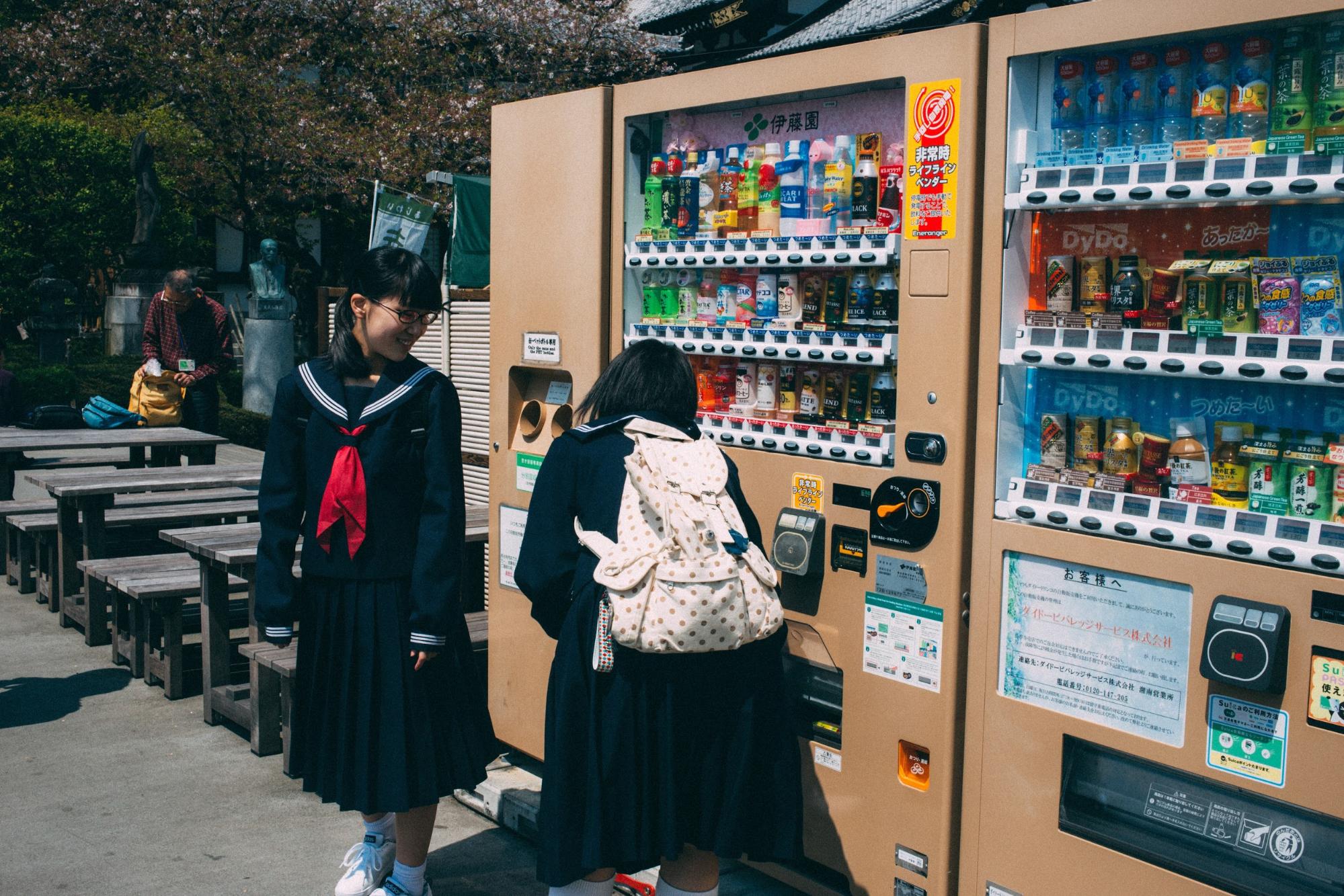
Image credit: Charles Deluvio
Vending machines can be found almost anywhere in Nihon, and they're loved for their convenience. Japan'southward public safety levels accept helped ensure that these vending machines are rarely vandalised, assuasive them to be placed almost anywhere.
About vending machines in Japan sell soft drinks, tea, and java. Others sell age-restricted items such as alcoholic beverages and cigarettes. Vending machines selling such products require a special ID for age verification.
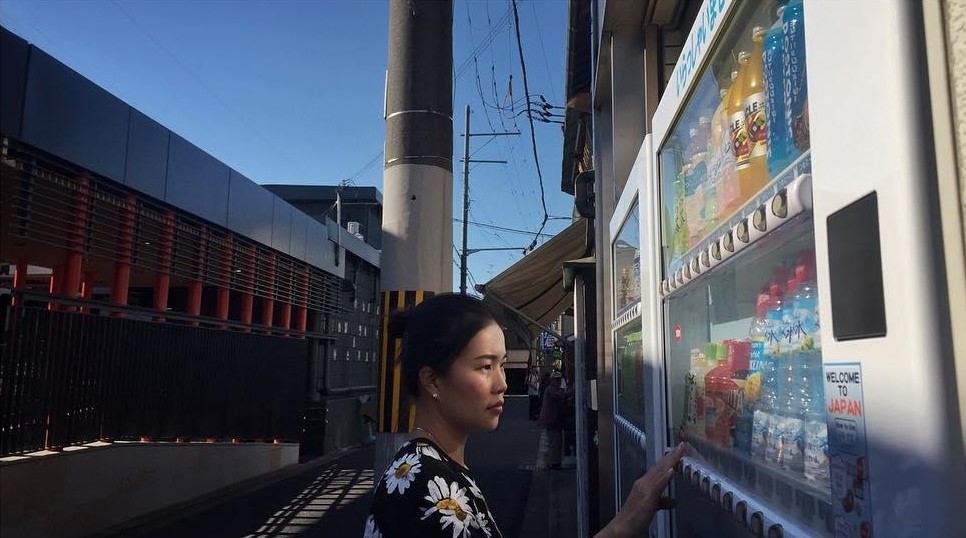
Paradigm credit: @joonhan.ng
Some of the more peculiar vending machines even let you lot buy rice, fortune-telling slips of paper, and live rhinoceros beetles.
14. More paper is used for printing manga than toilet paper
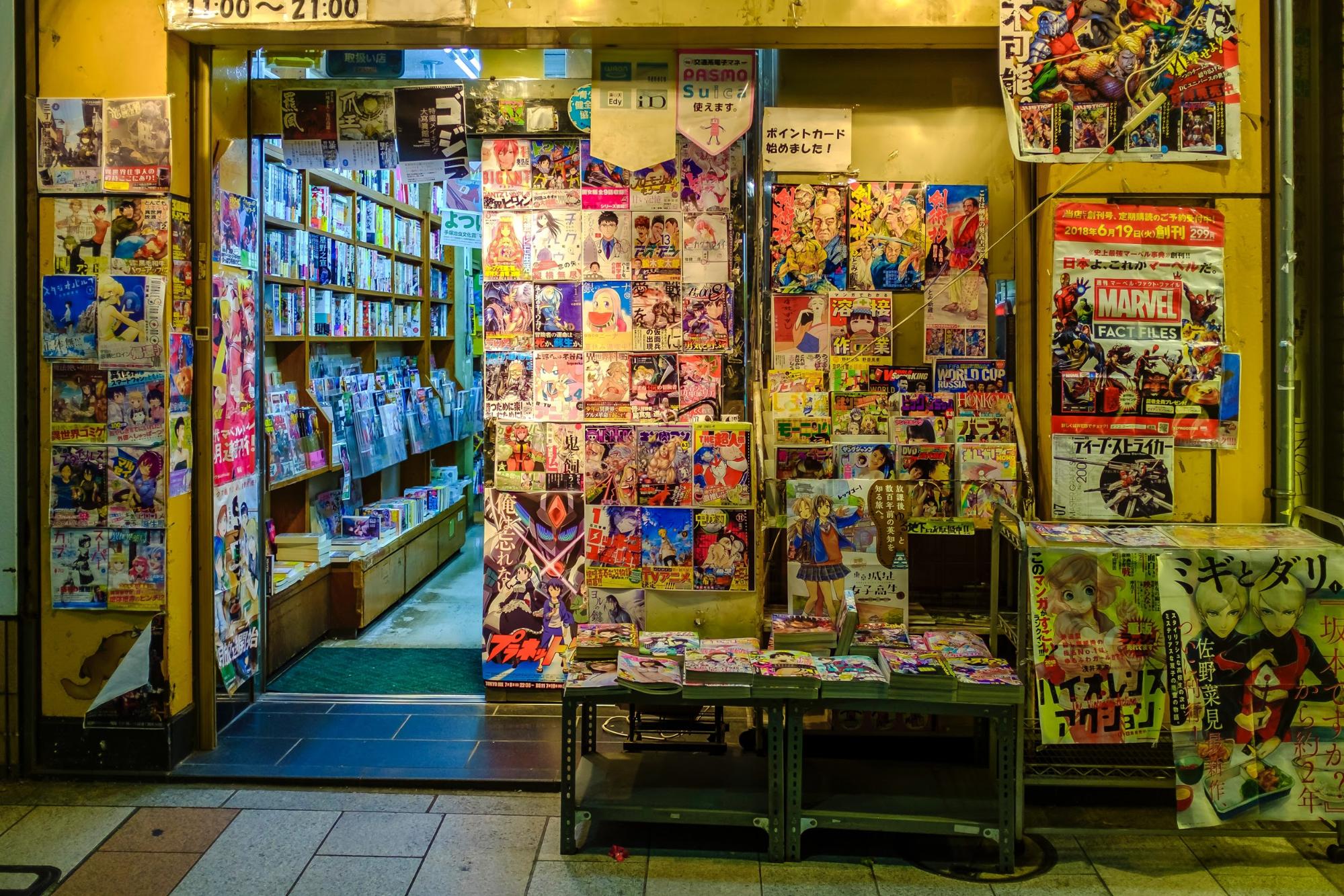
Prototype credit: Martjin Baudoin
You've probably seen videos of Japanese toilets and their futuristic, automated bidets that spray warm water and air-dry out people'south bottoms. Virtually people apply bidets in Nippon, and toilet paper isn't used as much as in other countries.
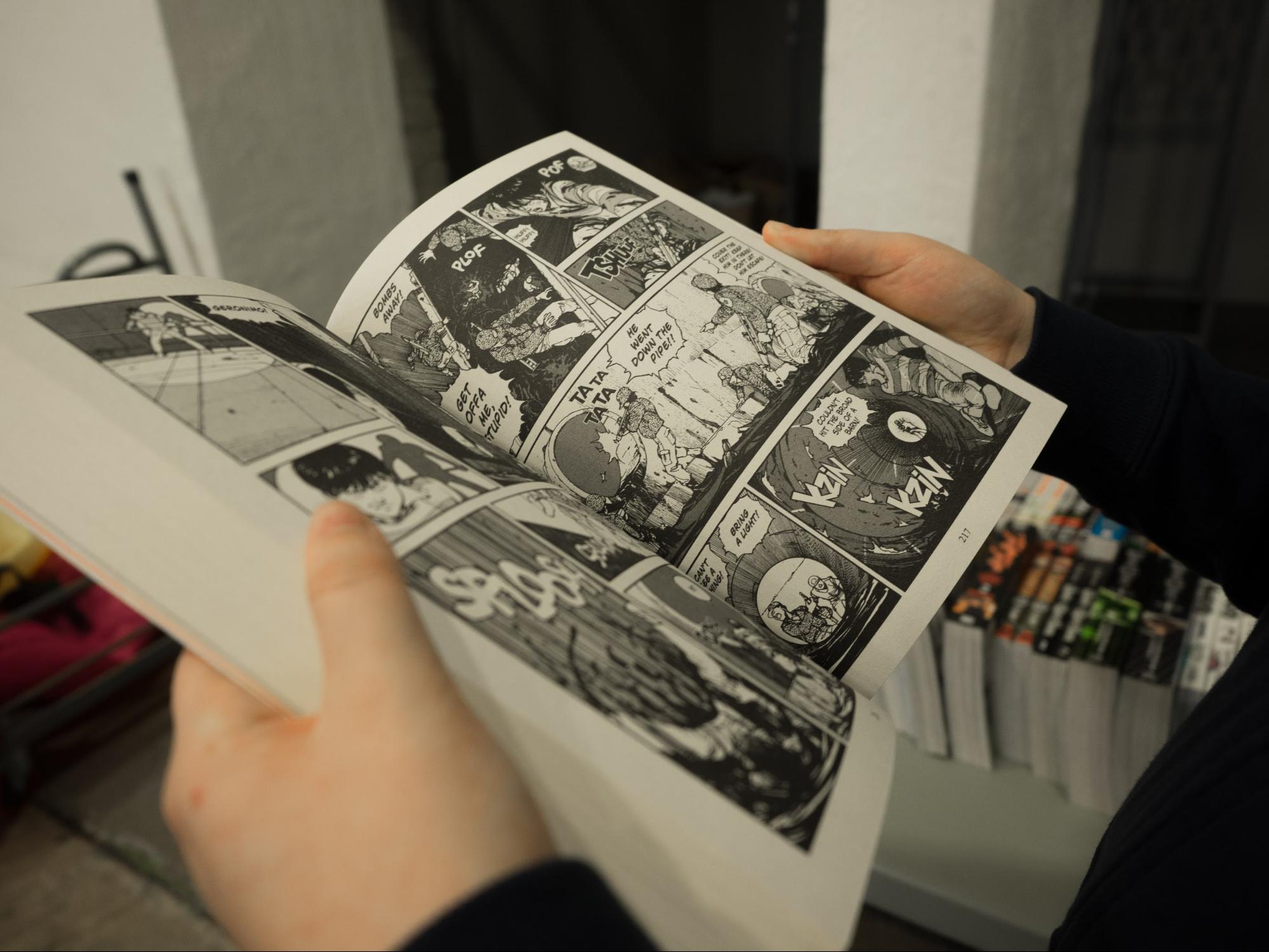
Paradigm credit: Miika Laaksonen
On the other paw, manga, or graphic novels, are widely read by people of all ages. Manga has a long history – it was kickoff introduced in the Meiji era as comic strips in magazines to encourage literacy in children.
15. Sumos compete to make babies cry start

Paradigm credit: @annastewartcnn
Every Apr, the 400-year-old Naki Sumo Baby Crying Festival takes place in Sensoji Temple. Parents bring their children to the festival in the hopes of ensuring skilful health, and sumos volition behave them onstage and try to make them cry. Some of them pull a scary face or yell at the babies to endeavor and get them to wail. If all else fails, a scary mask is used to get them going.
While it may exist weird to voluntarily make your kid weep, it is believed that by getting babies to bawl, they tin chase off any demons who are lurking nearby . The contest also has an attractive prize – the all-time crier is promised a long and good for you life.
16. Norway introduced salmon sushi to the Japanese
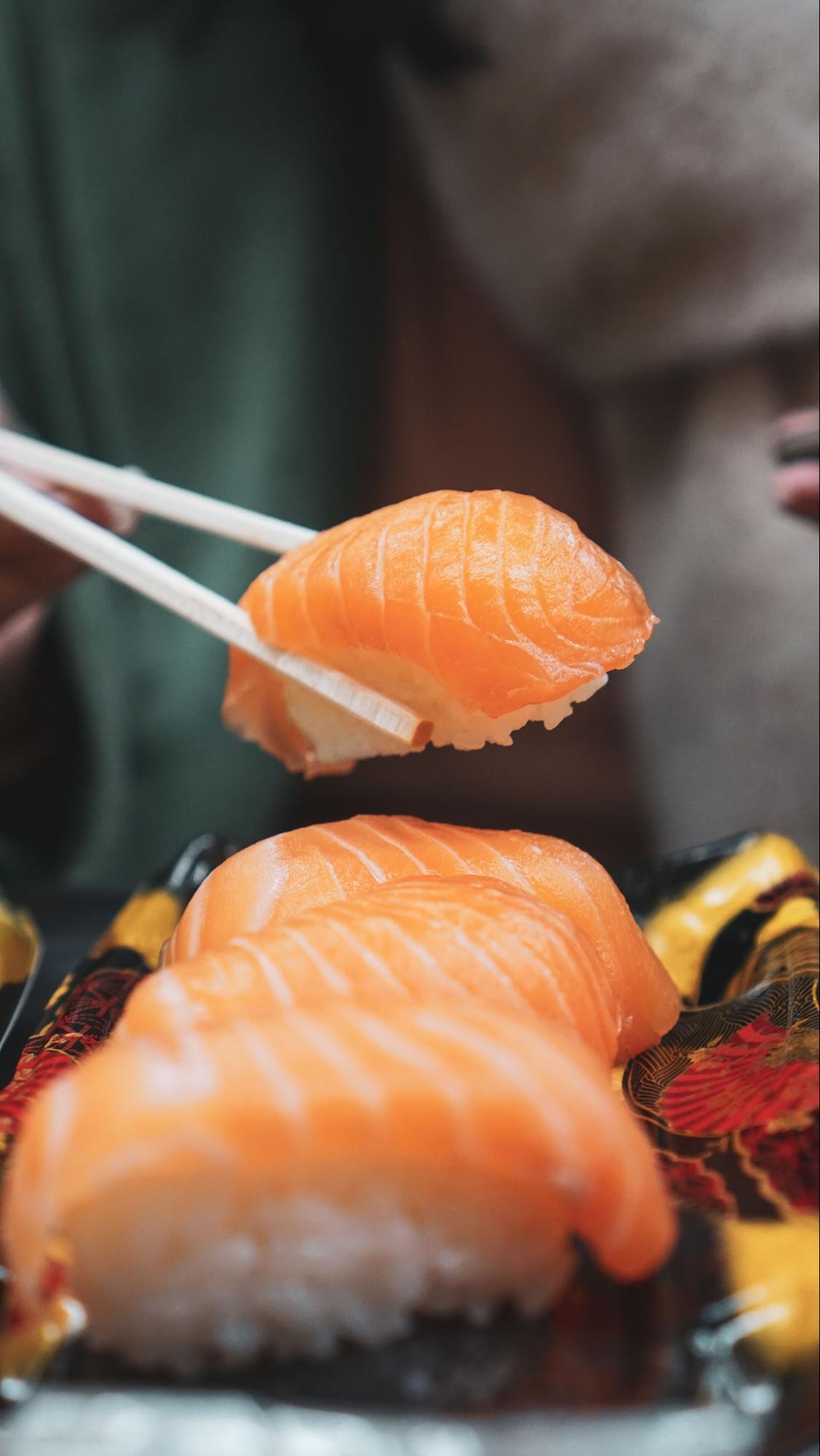
Prototype credit: Helga Christina
While many of united states of america think of salmon sushi as a Japanese staple, raw salmon wasn't in their nutrition until the 1990s. The Japanese did eat salmon before that, but it was served cured or grilled, not raw.
The Japanese believed that salmon caught in the Pacific was unclean and exposed to parasites, likewise every bit not being fatty plenty to gustation expert. That'due south why it was never served raw as sashimi before the '90s.
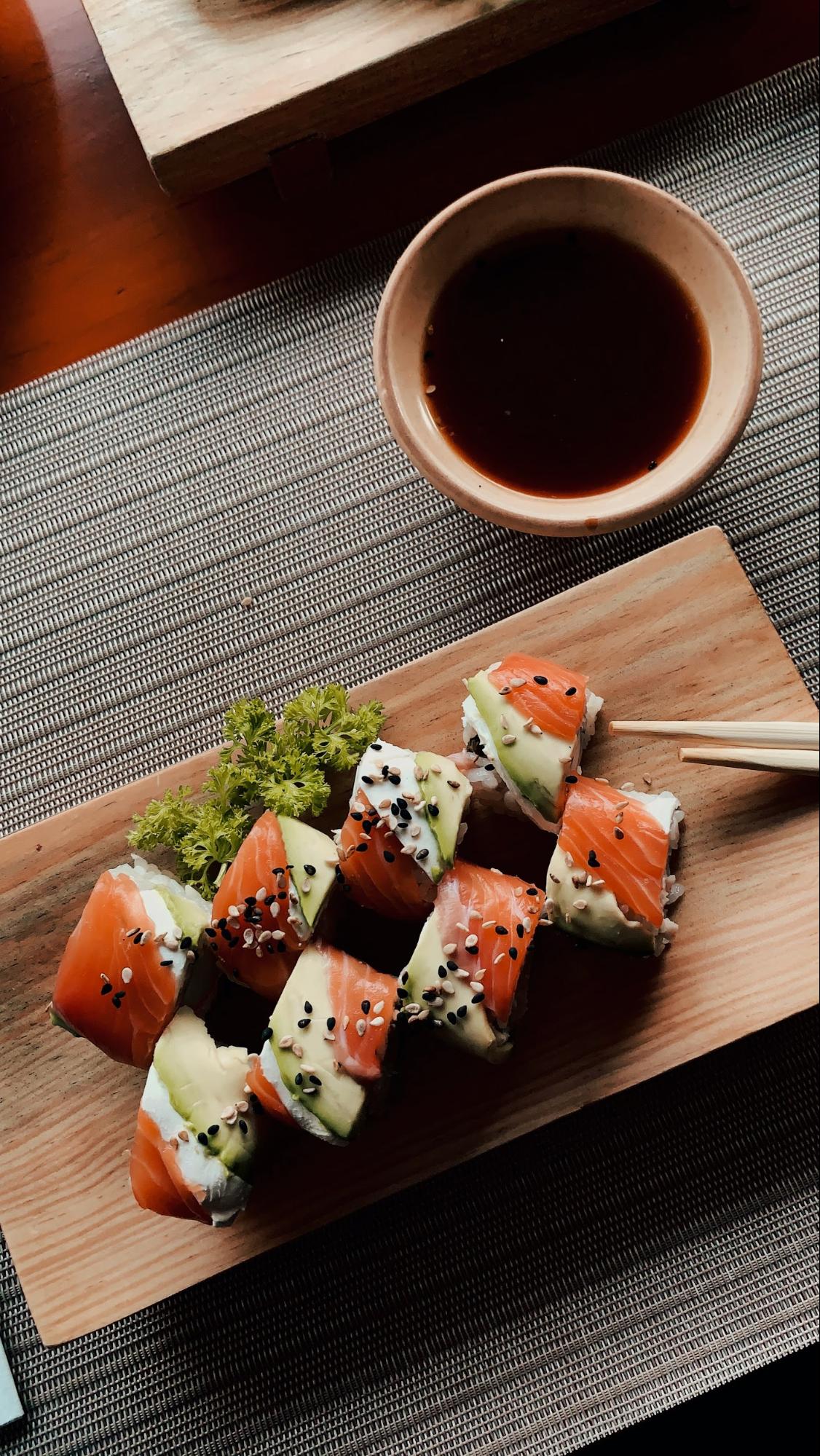
Image credit: Derek Duran
Norway began exporting salmon from the Atlantic in 1980, but it took fifteen years of market research and campaigning before the Japanese finally began to put raw salmon slices onto vinegared rice balls.
Changing the Japanese perspective on raw salmon was a multi-million endeavour that involved tireless campaigning. However, information technology paid off – it also opened new markets for Norway, and they began to export to other Asian countries such every bit Hong Kong, South Korea, and Singapore.
17. Japan imports approximately 85% of Jamaica'due south annual coffee production

Image credit: Nathan Dumlao
Japan is known as a tea-axial nation, just coffee besides plays a large part in the hectic lives of the average Japanese salaryman. Coffee is widely consumed there, with the boilerplate adult drinking more 10 cups a week.

Prototype credit: Kirill Petropavlov
It'southward no surprise that Japan imports and then much coffee from Jamaica, too. Blue Mount Coffee, a high-quality blazon of coffee from the Bluish Mountain region in Jamaica, is sought after by avid coffee drinkers in Nippon who are willing to pay premium prices.
eighteen. Smoking indoors was socially adequate until recently
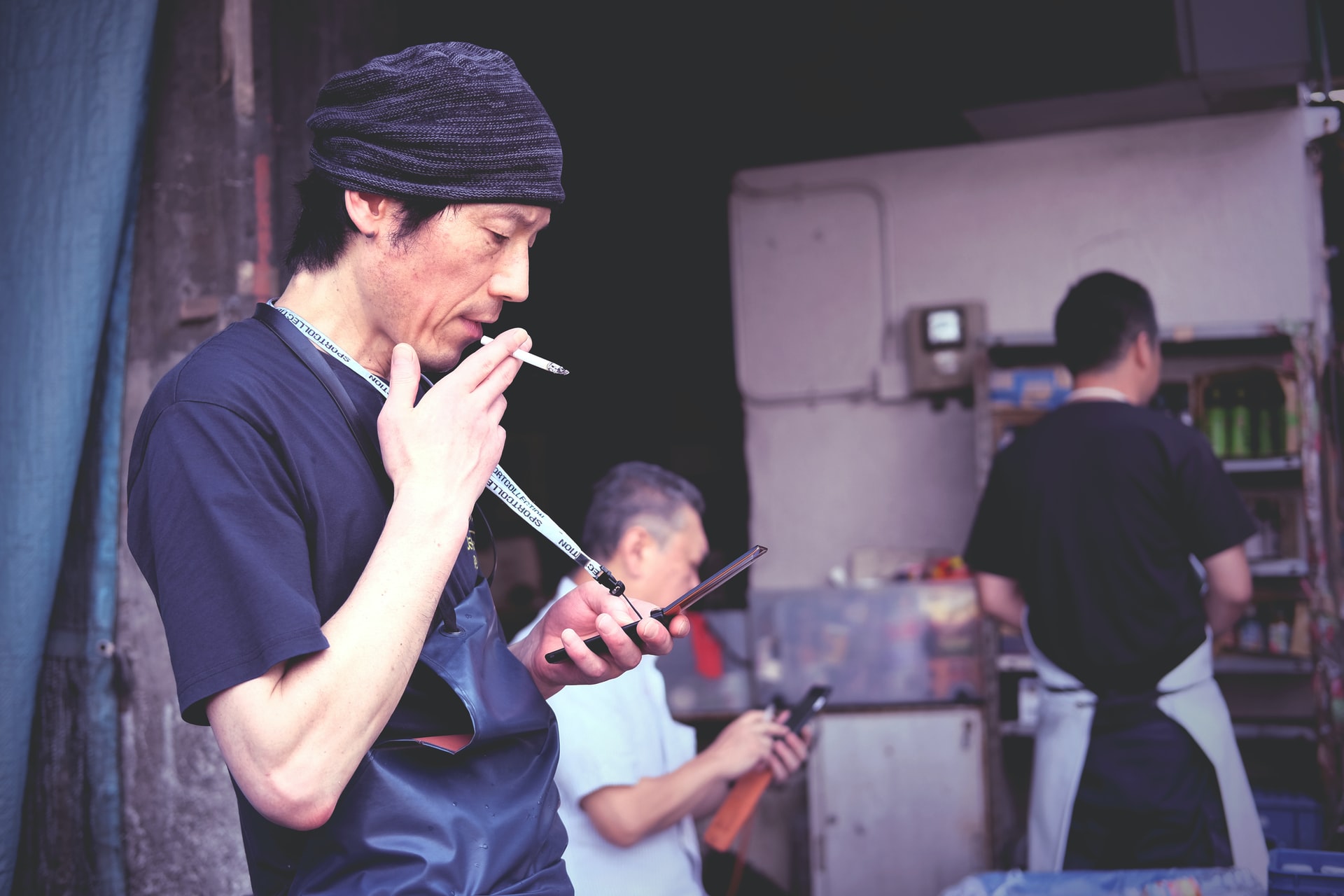
Image credit: Erica Leong
Japan has 1 of the largest tobacco markets in the world, and smoking in establishments such as restaurants and kissatens (sometime-school java shops) is considered socially adequate.
In Apr 2020, a city-wide ban on smoking indoors came into effect. This was part of the efforts to make Tokyo more tourist-friendly for the now-delayed 2020 Tokyo Olympics.
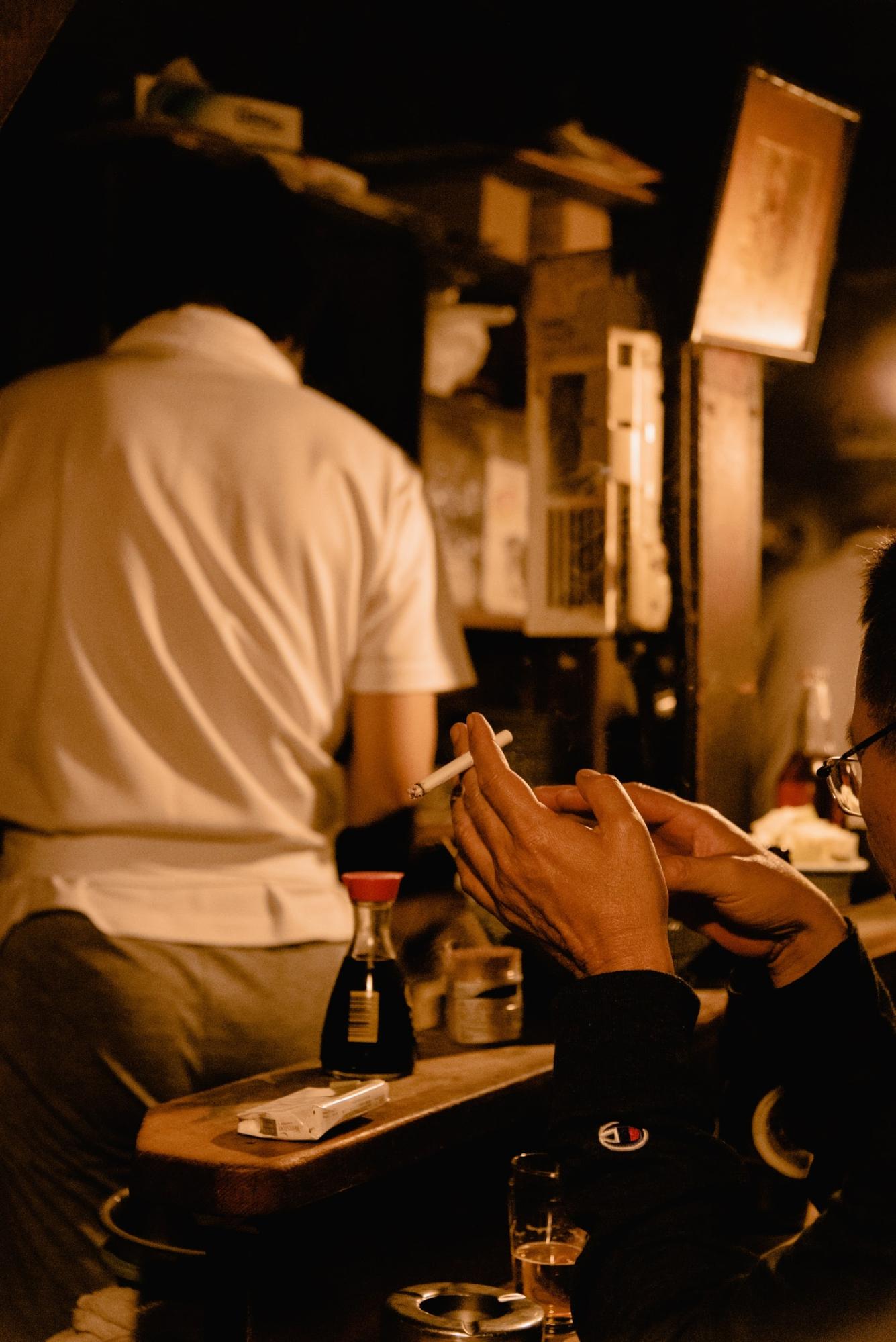
Image credit: Parker Ulry
Many have bemoaned this ban, stating that information technology was office of their culture. Others strongly supported this move to increase the number of non-smoking areas in other cities equally well.
19. Fortune cookies originated from Japan

Image credit: Meritt Thomas
Fifty-fifty though fortune cookies are served in almost every American Chinese restaurant, it didn't originate in China. Instead, it is based on a cookie made in Kyoto.
The tsujiura senbei (辻占煎餅) is visually like to the modern fortune cookie only it contains miso and sesame, rather than vanilla and butter. The tsujiura senbei is withal sold in some parts of Japan, such equally the neighbourhood of the Fushimi Inari Shrine in Kyoto.
The modern fortune cookie is believed to have been created past Japanese immigrants in the early on 20th century, and is served at the end of a repast in Chinese restaurants in the U.s. today. It'southward likely that the immigrants were inspired by the temples of their homeland and slipped in the fortune-telling slips of paper into the cookies.
xx. The original geishas were men

Image credit: Han Min T
Walking downwards the streets in Kyoto, you're likely to come beyond a beautifully dolled-up lady dressed in an intricately embroidered kimono , with only the click-clacking of her slippers announcing her presence. Y'all've met a geiko , or geisha , as they're called in Tokyo – a refined lady skilled in the art of traditional Japanese performances.
Many foreigners mistakenly presume that geisha are ladies of the nighttime. This is probable because sex workers of the past dressed similarly to the geisha . And don't go usa started on skewed Western media portrayals à la Memoirs of a Geisha . However, the original geisha were far from what they've been portrayed as – they were men.
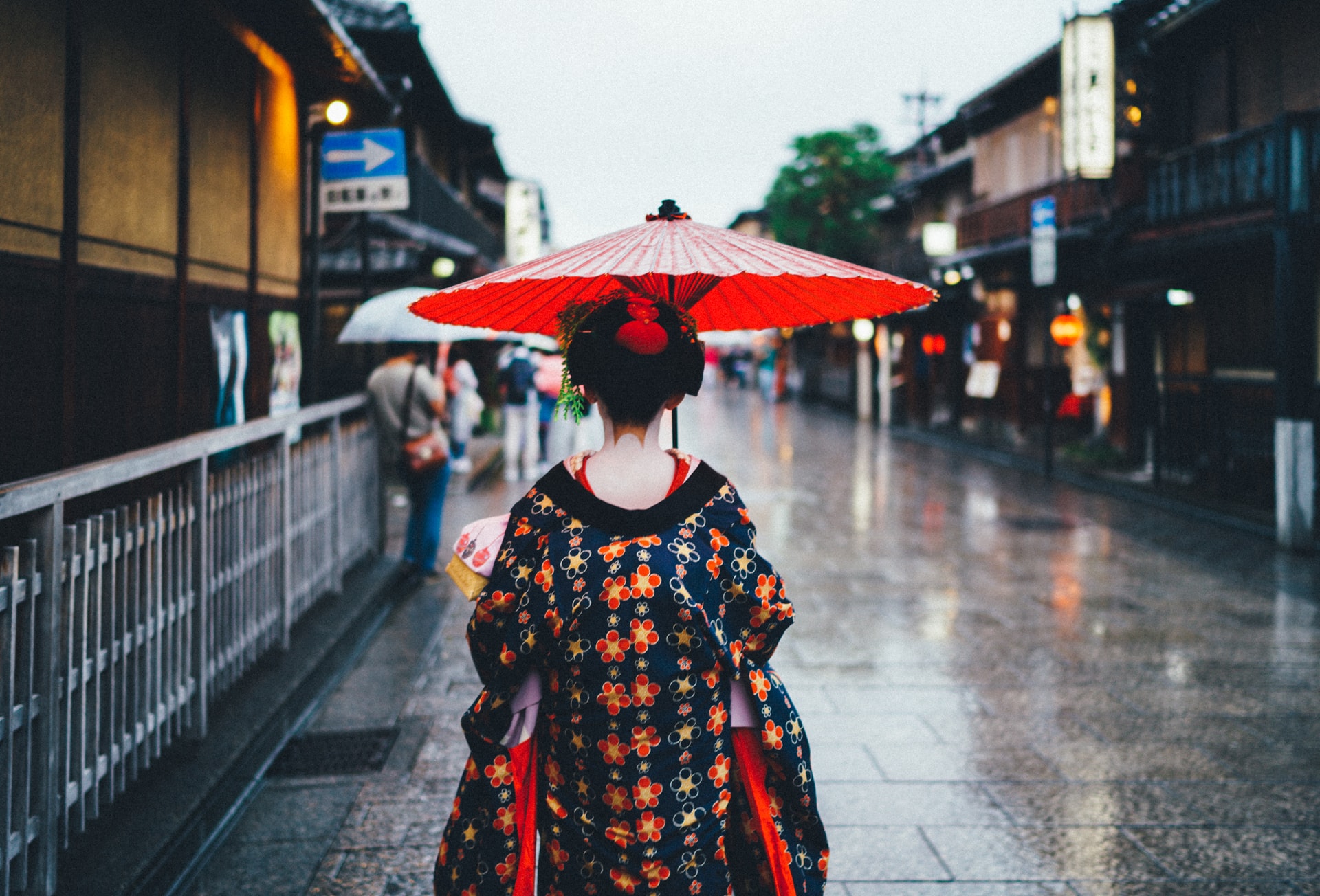
Image credit: Tianshu Liu
Geisha (芸者) literally translates to "arts person", and this term was used to describe the taikomochi (太鼓持) – male entertainers who performed for their feudal lords, much similar the jesters of the W.
The first female geisha was introduced in 1751, which made waves in the amusement scene so. They were instead called geiko , or "arts child", and their popularity spread chop-chop. Soon, they outnumbered the original male geishas .
Nihon fun facts
How many of these facts did y'all already know about, and how many are completely new to you? One thing's for sure – Japan is an unusual place, and no other state can rival its penchant for the bizarre.
Bank check out these articles:
- Haunted places in Japan
- Horror anime series
- Japanese urban legends
- Japanese anime movies
- Anime recipes IRL
Follow The Smart Local Japan on Facebook, Instagram and Telegram for more stories similar this.
Source: https://thesmartlocal.com/japan/unusual-japan-facts/
0 Response to "Things You Didnt Know Where Japanese"
Post a Comment